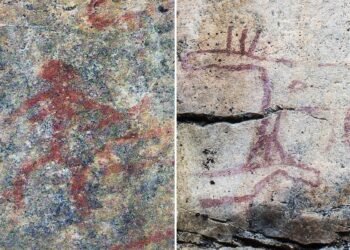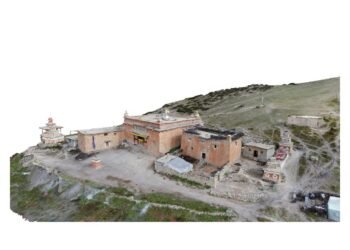A new archaeological study has shed light on the early development of the Scythian “animal style,” one of the most iconic art traditions in the ancient world. Researchers led by Dr. Timur Sadykov have analyzed finds from Tunnug 1, a monumental burial mound in the Republic of Tuva, Russia, dated to the late ninth century BCE. Their finds, published in Antiquity, provide rare insights into the development of this symbolic art form that would later dominate the Eurasian steppe.

The Scythians, originally of Iranian stock, were an ancient nomadic people known from as early as the 9th century BCE. They were renowned for their equestrian skills and played a key role in shaping the cultural and artistic traditions of the Eurasian steppe.
The Scythian animal style, famous for its stylized depiction of animals in gold, bronze, and bone, has been of long standing interest to scholars. It appears on such varied items as horse gear, weapon fittings, jewelry, and tattoos, and was more than a decoration—it was a visual language revealing identity, power, and cosmological beliefs among mobile pastoralist societies. The origins of the tradition have been in dispute for a long time, however, largely because most of the artifacts lack secure archaeological contexts.
The site of Tunnug 1, within the Uyuk Valley—known as the “Valley of the Kings” for its monumental burial mounds—opens a special window onto this formative period. Initially discovered in 1980 but abandoned for decades due to the swampy terrain, Tunnug 1 has recently yielded an unparalleled collection of artifacts, human remains, and horse sacrifices. The tomb, which can be precisely dated to between 833 and 800 BCE, is one of the earliest known examples of Scythian-type material culture and includes the full “Scythian triad” of weapons, horse gear, and animal-style motifs.

What sets Tunnug 1 apart is the simplicity of its artistic expression. Unlike later Scythian masterworks filled with gold and mythic symbolism, the ornaments here display only four species of animals—felines, birds, snakes, and ovicaprids (presumably wild argali sheep). The majority were made of bronze or bone, not precious metals, and served to adorn practical items like cheekpieces, harness appliqués, and weapon handles. This limited iconographic range suggests that early Scythian art was focused on wild animals as spiritual symbols of nature rather than on complex mythological scenes.
The narrow but powerful repertoire at Tunnug 1 contrasts with the vast menagerie that later evolved across the steppe. Researchers believe this first phase reflects a society engaged in formulating its social and artistic identity. The stylistic diversity of the artifacts indicates interaction among multiple nomadic groups, each bringing its distinct traditions and technologies to the funerary rites performed in the valley. Such interaction may have initiated the formation of a shared artistic vocabulary—one that evolved into the iconic Scythian animal style spanning from the Black Sea to Mongolia.

Tunnug 1’s findings also contradict previous theories that described Scythian culture as the result of a gradual eastward diffusion. Rather, the evidence supports a Central Asian origin in South Siberia and Inner Asia and suggests the possibility that the Scythian art tradition developed indigenously among early steppe groups and was not brought over from the west.
Aside from its artistic significance, the excavation of the site provides significant chronological data on the emergence of Iron Age nomadic societies. The precise dating and intact condition make Tunnug 1 a cornerstone in reconstructing the way ritual, technology, and art intertwined during the first millennium BCE.
Scholars continue to analyze the remaining material from the site in order to enhance our understanding of how these ancient nomads conceptualized their world through art.






















Comments 0